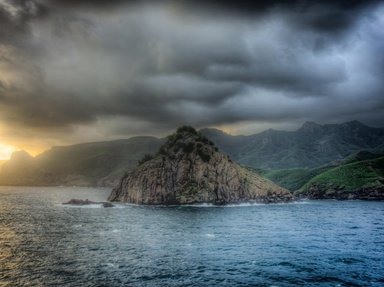Quiz Answer Key and Fun Facts
1. The boundary separating the island of New Guinea between Papua New Guinea and Indonesia is largely a straight line, except for one point where it takes a bit of a detour (see the map in the picture clue). What type of geographic feature caused this deviation?
2. Papua New Guinea's territory includes several islands in the western Pacific. Which of these is the largest island of the Bismarck Archipelago?
3. Papua New Guinea is covered in rainforest, so travelling around the country can be a bit tricky. What would be the most likely way for someone to get from the capital, Port Moresby, to the city of Lae, which is located at one end of the Highlands Highway?
4. The Torres Strait separates Papua New Guinea from which Australian state or territory?
5. Papua New Guinea's capital city, Port Moresby, is located on the Papuan Peninsula. By what alternative name is this peninsula also known?
6. The annual Goroka Show is one of Papua New Guinea's most popular tourist attractions and involves different tribes showcasing their culture, particularly through music and dancing. By what name is this type of Papuan cultural gathering known?
7. In addition to the country's second-highest volcano, what other geographical feature of Papua New Guinea is called Mount Hagen?
8. The island of New Guinea is one of the most biologically diverse places on earth with hundreds of endemic species. Which of these animals found there is specifically endemic to Papua New Guinea?
9. Manus Island, which gives its name to Papua New Guinea's smallest province, is part of which island group?
10. The other countries of the world with 'Guinea' in their name - Equatorial Guinea, Guinea and Guinea-Bissau - are located on the African continent, but island-based Papua New Guinea is larger than all of them. True or false?
Source: Author
Fifiona81
This quiz was reviewed by FunTrivia editor
agony before going online.
Any errors found in FunTrivia content are routinely corrected through our feedback system.

